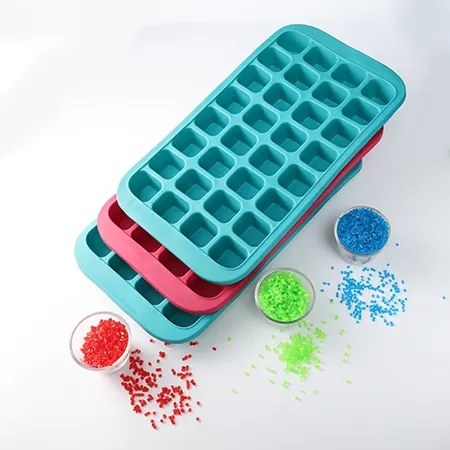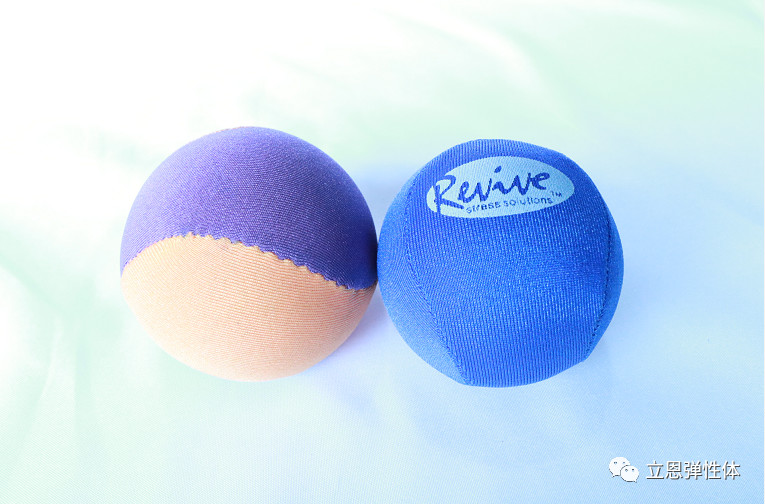As a materials engineer who’s spent years working with TPE (Thermoplastic Elastomer) in various applications—from yoga mats to medical devices—I’ve seen my fair share of challenges. One issue that crops up time and again is TPE materials turning sticky. It’s frustrating, whether you’re a manufacturer dealing with defective products or an end-user noticing your TPE grip or mat clinging to everything. Over the years, I’ve tackled this problem head-on, experimenting with solutions and learning from both successes and failures. In this guide, I’ll walk you through why TPE gets sticky, how to fix it, and how to prevent it, all while sharing practical tips and real-world insights.

Why Does TPE Become Sticky?
Before diving into solutions, it’s worth understanding the root causes. TPE is a versatile material, blending the flexibility of rubber with the processability of plastic. Its unique properties make it ideal for soft-touch grips, seals, and more. However, under certain conditions, TPE can develop a tacky surface, which feels unpleasant and can attract dust or debris. Based on my experience, the main culprits are:
Material Degradation: Exposure to heat, UV light, or humidity can break down TPE’s molecular structure, causing it to become sticky. This is especially common in low-quality or improperly formulated TPE.
Oil Migration: TPE often contains plasticizers or oils to enhance flexibility. Over time, these can migrate to the surface, creating a sticky residue.
Surface Contamination: Dirt, sweat, or cleaning agents can react with TPE, altering its texture.
Aging: Like many polymers, TPE naturally ages, and prolonged use or storage can lead to stickiness, especially in softer grades (e.g., Shore 30A).
Improper Processing: During manufacturing, incorrect molding temperatures or inadequate cooling can trap residual compounds, leading to a tacky finish.
I recall a project where a batch of TPE phone grips turned sticky after a few months. After investigating, we traced the issue to excessive plasticizer content in the formulation, which migrated under humid conditions. Understanding the cause is the first step to finding the right fix.

Solutions for Sticky TPE Materials
Dealing with sticky TPE depends on whether you’re a manufacturer addressing a production issue or an end-user trying to salvage a product. Below, I’ve outlined practical solutions for both scenarios, drawing from my hands-on experience.
1. Cleaning the Surface (For End-Users)
If your TPE product—like a yoga mat or handle—has become sticky, a thorough cleaning can often restore its texture. Here’s how I approach it:
Mild Soap and Water: Mix a few drops of dish soap with warm water. Use a soft cloth to gently scrub the surface, focusing on sticky areas. Rinse thoroughly and air-dry. Avoid soaking, as TPE can absorb water, especially in softer grades.
Isopropyl Alcohol (70%): For stubborn stickiness, lightly dampen a cloth with isopropyl alcohol and wipe the surface. Test on a small area first, as alcohol can degrade some TPE formulations over time. This method worked wonders when I revived a sticky TPE mouse pad.
Baking Soda Paste: For tough residue, mix baking soda with water to form a paste. Apply it to the sticky area, scrub gently, and rinse. This is great for removing oily residues without harsh chemicals.
Caution: Avoid abrasive scrubbers or strong solvents (e.g., acetone), as they can damage TPE’s surface. Also, steer clear of oil-based cleaners, which can worsen stickiness.
2. Applying a Protective Coating (For End-Users and Manufacturers)
If cleaning doesn’t fully resolve the issue, a protective coating can seal the surface and reduce tackiness. I’ve used this approach in both consumer and industrial settings:
Talcum Powder or Cornstarch: Lightly dust the sticky surface with talcum powder or cornstarch. Rub it in with a soft cloth and wipe off excess. This creates a temporary barrier, reducing stickiness. I’ve recommended this to yoga students dealing with tacky TPE mats.
Silicone-Based Spray: For industrial applications, a thin layer of silicone spray can minimize tackiness. Ensure the product is food-safe if used on items like kitchen grips. Always test on a small area first.
Polymer Coatings: Manufacturers can apply specialized anti-stick coatings during production. These are typically polyurethane-based and require professional application but offer long-term protection.
In one case, we applied a cornstarch dusting to a batch of sticky TPE seals, which bought enough time to reformulate the material for the next production run.

3. Adjusting Storage Conditions (For All Users)
Improper storage is a common cause of stickiness, especially for TPE products exposed to heat or humidity. Here’s what I advise:
Store in a Cool, Dry Place: Keep TPE items away from direct sunlight, heaters, or humid environments. Ideal storage is 15-25°C with 40-60% humidity.
Use Protective Covers: For items like yoga mats, store them in a breathable bag to prevent dust buildup and UV exposure.
Avoid Stacking: Don’t stack TPE products tightly, as pressure can exacerbate oil migration. I learned this the hard way when a stack of TPE grips fused together in a hot warehouse.
4. Reformulating the Material (For Manufacturers)
If you’re a manufacturer, stickiness often points to a formulation or processing issue. Here’s how I’ve tackled this in production:
Reduce Plasticizer Content: Work with your material supplier to lower the oil or plasticizer content. For example, switching to a TPE grade with 5-10% less plasticizer resolved stickiness in a medical tubing project.
Add Anti-Tack Additives: Incorporate additives like silica or calcium carbonate to reduce surface tackiness. These must be carefully balanced to avoid affecting flexibility, as noted in a study by the Society of Plastics Engineers .
Optimize Polymer Blends: Use a higher proportion of crystalline polymers (e.g., polypropylene) in the TPE blend to enhance stability. This requires testing to maintain desired properties.
5. Improving Processing Parameters (For Manufacturers)
Stickiness can also stem from improper molding. I’ve seen this in projects where rushed production led to quality issues. Key adjustments include:
Lower Molding Temperatures: TPE is typically processed at 160-220°C. If stickiness occurs, reduce the barrel temperature by 5-10°C to prevent thermal degradation.
Extend Cooling Time: Ensure adequate cooling in the mold to stabilize the material’s surface. For a TPE grip project, increasing cooling time by 10 seconds eliminated tackiness.
Clean Molding Equipment: Residual oils or degraded material in the injection molding machine can contaminate TPE. Regular cleaning with purging compounds is a must.

6. Replacing the Product (Last Resort)
If all else fails, the TPE may be irreversibly degraded, especially for consumer products exposed to harsh conditions. In this case, replacing the item is the best option. For manufacturers, this means recalling affected batches and reformulating for future runs. For end-users, consider investing in a higher-quality TPE product with better resistance to stickiness.
Comparison of TPE Stickiness Solutions
To help you choose the right approach, here’s a table summarizing the solutions, their applications, and considerations:
| Solution | Best For | Pros | Cons | Cost |
|---|---|---|---|---|
| Cleaning (Soap/Alcohol) | End-users, light stickiness | Easy, inexpensive, quick | May not work for severe cases | Low ($1-5) |
| Protective Coating (Talcum/Silicone) | End-users, manufacturers | Reduces tackiness immediately | Temporary, requires reapplication | Low to Medium ($5-20) |
| Improved Storage | All users, prevention | Prevents further degradation | Doesn’t fix existing stickiness | Free |
| Material Reformulation | Manufacturers, production | Long-term fix, improves quality | Requires testing, supplier coordination | High ($1000s) |
| Processing Adjustments | Manufacturers, production | Addresses root cause | May slow production | Medium ($100s) |
| Replacement | End-users, severe cases | Guaranteed solution | Costly, wasteful | High ($20-100) |
This table reflects my experience balancing cost, effectiveness, and practicality across various TPE projects.
Preventing TPE Stickiness: Proactive Measures
An ounce of prevention is worth a pound of cure. Here are strategies I’ve implemented to keep TPE stickiness at bay:
Choose High-Quality TPE: Opt for TPE grades with low plasticizer content and UV stabilizers, especially for outdoor or high-humidity applications. Consult suppliers for data sheets specifying aging resistance.
Test Environmental Resistance: Before mass production, conduct accelerated aging tests (e.g., 85°C, 85% humidity for 72 hours) to simulate long-term exposure. This helped me catch a sticky TPE formulation before it hit the market.
Use Protective Packaging: For consumer products, include storage instructions and protective bags to shield TPE from heat and UV light.
Educate Users: Provide care guides emphasizing proper cleaning and storage. I once worked with a yoga mat company to include a care card, reducing customer complaints about stickiness by 30%.

A Real-World Example: Solving a Sticky TPE Crisis
A few years back, I consulted for a company producing TPE shoe insoles. Customers reported that the insoles became sticky after a few months, especially in humid climates. We conducted a root-cause analysis and found two issues: excessive plasticizer in the TPE blend and inadequate cooling during molding, which trapped oils on the surface.
Our solution was three-pronged:
Reformulation: We collaborated with the supplier to reduce plasticizer content by 8% and added a silica-based anti-tack additive.
Process Optimization: We lowered the molding temperature from 210°C to 200°C and extended cooling time by 15 seconds.
Customer Guidance: We provided users with cleaning instructions and recommended storing insoles in a dry, ventilated area.
The result? Stickiness complaints dropped to near zero, and the company saw a boost in customer satisfaction. This experience reinforced the importance of addressing both material and process factors.

Common Questions About Sticky TPE Materials
To round out this guide, I’ve answered some frequently asked questions based on my interactions with clients and colleagues:
Q1: Can sticky TPE be fixed permanently?
A: For end-users, cleaning and coatings offer temporary relief, but severe degradation may require replacement. Manufacturers can achieve permanent fixes by reformulating or optimizing processing.
Q2: Is stickiness a sign of low-quality TPE?
A: Not always. Even high-quality TPE can become sticky under harsh conditions like prolonged heat or UV exposure. However, poorly formulated TPE with excessive plasticizers is more prone to this issue.
Q3: Does stickiness affect TPE’s safety?
A: Stickiness itself doesn’t necessarily make TPE unsafe, but it can attract dirt or bacteria, especially in items lika yoga mats. Regular cleaning mitigates this risk.
Q4: Can I use vinegar to clean sticky TPE?
A: Diluted white vinegar can work for mild stickiness, but it’s less effective than soap or alcohol. Use a 1:1 vinegar-water mix, rinse thoroughly, and dry completely to avoid moisture absorption.
Q5: How do I know if my TPE product is too degraded to save?
A: If cleaning and coatings don’t help, and the surface remains tacky or shows cracking or flaking, the TPE is likely degraded beyond repair. Replacement is the best option.
Closing Thoughts
Dealing with sticky TPE can feel like a puzzle, but with the right approach, it’s a solvable one. Whether you’re wiping down a yoga mat or reformulating a production batch, the key is understanding the material and its environment. My journey in the TPE industry has taught me that every challenge is an opportunity to learn and improve. I hope this guide equips you with the tools to tackle stickiness and keep your TPE products performing at their best.
Have a sticky TPE problem or a tip to share? Let’s connect in the comments—I’m always eager to swap ideas and help fellow enthusiasts navigate the world of elastomers!





